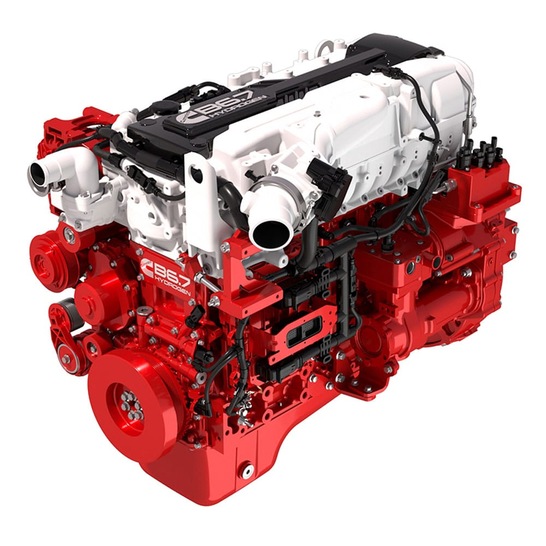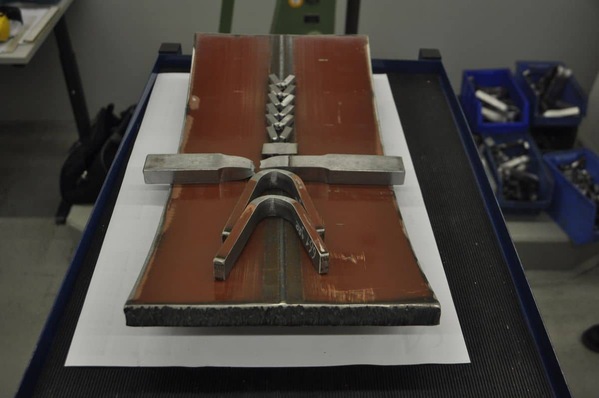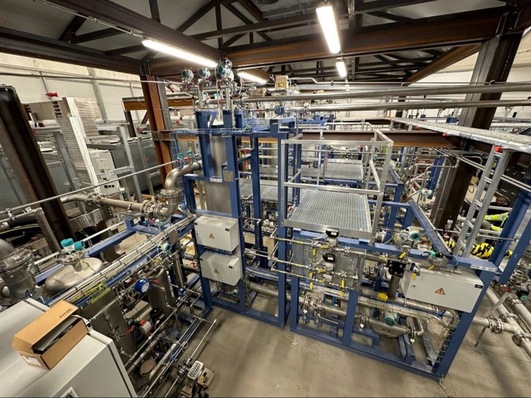My recommendation to use the temporarily very weak prices in Cummins for continued and new buys has already paid off: The share price grew from around 200 to over 255 USD. And it will continue to, even though Cummins is increasingly focusing on new markets like hydrogen (engines, electrolysis, stacks for commercial vehicles, etc. – we reported).
Cummins can finance its own growth well from its own means through corporate earnings. On average, 34 percent of corporate profits are distributed to shareholders as dividends – in 2022, it was 6.28 USD per share. This was topped up by seven percent on July 11 to 1.68 USD per share for the quarter. The company's growth rate of 26 percent per year on average over the past five years is solid. Cummins now sees turnover in the current fiscal year at 33 billion USD and expects an earnings per share of 19.80 USD, which corresponds to a growth of 31 percent. A good justification for further rising prices.
Share price decline despite good figures
Cummins reports for the second quarter a turnover of 8.6 billion USD (plus of 31 percent) and profit of 720 million USD, which came out lower than expected, however, and allowed the share price to sink from over 255 USD to 230 USD – thus already back to buy level, as the guidelines are unchanged.
Together with Air Liquide, Cummins Engine acquired Canadian company Hydrogenics in 2019 for 290 million USD. In the transaction, Air Liquide retained at that time a 19 percent share in the company. This share Air Liquide has now sold to Cummins for the equivalent of about 156.5 million USD, making the value of Hydrogenics as per today the equivalent of over 823.7 million USD. Cummins plans with subsidiary Accelera, in which Hydrogenics is consolidated, to build an annual electrolysis capacity of 3.5 GW in the next years. A diversity of large orders – 500 MW in China, 500 MW in the USA, 500 MW in Spain and 1 GW in Belgium – are already in the books of Cummins or Accelera.
Considering that Plug Power intends to build 5 GW of electrolysis capacity within a few years and is currently valued on the stock exchange with a good 6 billion USD, Cummins should consider placing its subsidiary on the stock exchange, possibly while also retaining a majority shareholding, like Thyssenkrupp did with Nucera. The consequence in this purely theoretical consideration: Capital inflow of over 2 billion USD, with which, on the one hand, the price for buying Hydrogenics is covered (flows back in); in addition, an extraordinary profit beckons; and thirdly, Accelera via the stock exchange would receive new growth capital (for acquisitions?) – just as a thought experiment.
Hydrogen-powered engines
The automotive expert journal WardsAuto reports on how advanced Cummins is in its work to bring engines to market that run on hydrogen. There is to be a new version of the successful B6.7 diesel engine that with its powertrain burns hydrogen and can be used in heavy trucks. After all, there are already restrictions in place in California that prohibit already starting 2024 the operation of diesel trucks on, among other places, port grounds. Vehicles produced before 2010 will soon no longer be allowed on the roads of this state. A winning pass to all manufacturers of alternative drives – so employment of the fuel cell or direct injection of hydrogen as well as battery-electric systems.
With this, the new B6.7H 6.7-liter hydrogen engine (range of 483 km, or 300 mi) can quickly become a slam dunk if hydrogen and the corresponding infrastructure are available. So it is very suitable that the US government via the Inflation Reduction Act has provided 8 billion USD for the construction of six to ten H2 terminals distributed across the US – in addition to the many individual programs offered by states such as California.
Summary: Cummins Engine is working on a variety of platforms for the use of hydrogen in many applications such as heavy transport and rail but also for electrolysis, whether PEM or alkaline. The stock market will increasingly let this show in the company valuations. A real H2/FC blue chip is what Cummins has developed into.
Disclaimer
Each investor must always be aware of their own risk when investing in shares and should consider a sensible risk diversification. The FC companies and shares mentioned here are small and mid cap, i.e. they are not standard stocks and their volatility is also much higher. This report is not meant to be viewed as purchase recommendations, and the author holds no liability for your actions. All information is based on publicly available sources and, as far as assessment is concerned, represents exclusively the personal opinion of the author, who focuses on medium- and long-term valuation and not on short-term profit. The author may be in possession of the shares presented here.
Author: Sven Jösting









